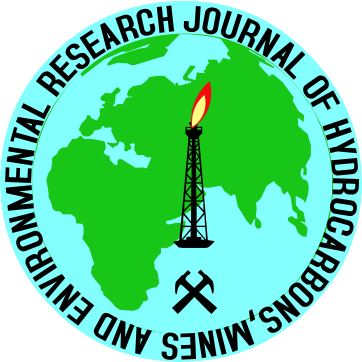JOURNAL OF HYDROCARBONS MINES
AND ENVIRONMENTAL RESEARCH
__________________
 |
©
Journal of Hydrocarbons Mines and Environmental Research, ISSN: 2107-6510,
Volume 3, Issue 2, December 2012, 37-46 __________________________________________________________________________________________________ |
Evolution of hydrochemical facies of the groundwater of the shallow aquifer, NW Libya
Zuhair B. Hafi 1,* and Khalil I. Al-Samarrai 2,*
1 Department of Geology, Faculty of Science, University of Tripoli, P.O. Box 13258, Tripoli, Libya
2 Department of Engineering Geology, Faculty of Engineering, University of Tripoli, P.O. Box 13041 Tripoli, Libya
* Corresponding authors: zuhair_Hafi@Live.com (Z.B. Hafi), khalsamarrai@yahoo.co.uk (K.I. Al-Samarrai)
Received: 13 December 2012 - Accepted: 7
May 2013 - Available online: 7 May 2013
Abstract: Groundwater samples from the shallow aquifer in Alassa area, northwestern Libya were studied for their chemical properties. Hydrogeochemical characteristics were evaluated as well as ionic ratios (HCO3-/Cl-, Na+/Cl-, Ca+2/Cl-, Ca+2/SO4-2) to explain the distribution of the facies and the source of existing salinity. The study area shows that there is a mixture of different types of water with variable concentrations of major ions, resulted from salt water intrusion as well as dissolution of evaporates in the aquifer bearing water with limited influence of upward leakage. Chloride is found the dominant in the groundwater of the shallow aquifer in the study area caused by sea water encroachment at the coastal area as well as dissolution of halite pockets within the evaporate deposits at the southwestern part of the study area. The quality of groundwater and the processes that control the concentration of major constituents is very necessary to secure adequate water demand. The results of such studies will enable establishing and improving management of the groundwater resources of the area.
Keywords: Hydrochemistry, coastal aquifer, NW Libya.
Evolution du faciès hydrochimique des eaux souterraines de l'aquifère peu profond, Libye nord-occidentale
Résumé: Des échantillons d'eaux souterraines provenant de l' aquifère peu profond dans la région d'Alassa, nord-ouest Libyen ont été étudiés pour leurs propriétés chimiques. Des caractéristiques hydrogéochimiques ont été évaluées aussi bien que les rapports ioniques (HCO3-/Cl-, Na+/Cl-, Ca+2/Cl-, Ca+2/SO4-2) pour expliquer la distribution du faciès et la source de salinité existante. Le secteur d'étude prouve qu'il y a un mélange de différents types d'eau avec des concentrations variables des ions majeurs, provenant de l'intrusion d'eau salée aussi bien que de la dissolution des évaporites dans l'eau de l'aquifère avec une influence limitée de la fuite ascendante. Le chlorure est trouvé dominant dans les eaux souterraines de cet aquifère peu profond et résulte de l'empiétement d'eau de mer dans les régions côtières aussi bien que par la dissolution des poches de halite dans les dépôts d'évaporites de la partie sud-ouest du secteur d'étude. La qualité des eaux souterraines et les processus qui contrôlent la concentration des constituants majeurs devraient être nécessaires pour fixer les besoins adéquats d'approvisionnement en eau. Les résultats de telles études permettront d'établir et d'améliorer la gestion des ressources des eaux souterraines du secteur.
Mots clés: Hydrochimie, aquifère côtier, Libye nord-occidentale.